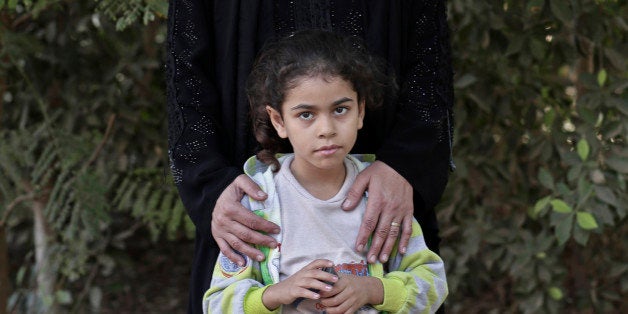
There is nothing relaxing about summer if you’re a girl at risk for female genital mutilation.
When school lets out, countries that still practice FGM increase the number of procedures they perform so that the girls have enough time to “heal” before vacation ends, CNN reported. And in places where the practice is strictly prohibited, including in the U.S. and the U.K., families often transport their daughters to their native countries so that they can undergo the procedure, which involves the partial or total removal of the female genitalia for non-medical reasons.
The numerous health risks include heavy bleeding, developing sepsis, urinary tract infections, cysts and becoming infertile, according to WHO.
And though FGM has been illegal in Egypt since 2008 and the country recently vowed to significantly reduce its rates, concerned advocates have their eye on the country that has one of the highest instances of FGM in the world.
Last year, 92.3 percent of women in Egypt -- between the ages of 15 to 49 who have been married -- were subjected to some form of FGM, according to government statistics.
Mona Mohamed, 47, is an example of how devastating summertime can be for girls in Egypt.
When she was 10, Mohamed was tied down by her mother and grandmother on a hot day in her village in Upper Egypt, she told CNN.
Though Mohamed was mutilated, she was by some measures considered “lucky” since a physician performed the procedure. Her sisters were cut by a midwife who used a razor and stanched the bleeding with dust.
To help combat the overwhelming FGM rates, Egypt announced a plan earlier this month to reduce the figures by 10 to 15 percent over the next five years, the Guardian reported. The goal is to mobilize doctors and judges to oppose the practice, but advocates fear that NGOs and grassroots groups weren’t given a significant enough of a role in the process.
“There are barriers to entry to people who want to support these great efforts, and they’re not being acknowledged here,” Soraya Bahgat told the Guardian. “That’s my biggest frustration.”
Advocates in other parts of the world are doing their part to prevent girls from getting cut this summer.
Though FGM is illegal and classified as an act of child abuse in the U.K., an estimated 100,000 women there are living with the effects of FGM, according to Forward, a U.K.-based nonprofit that’s working to protect the rights of African girls. And 60,000 are at risk.
To fight back against the practice of taking girls to their native countries to get cut during the summer, Forward recently released an animated short film called “Needlepoint” in hopes of educating more people about this trend, as well as the procedure's irreversible effect.
“The aim of 'Needlecraft' is to offer a more visual way to invoke passion and action,” Naana Otoo-Oyortey, executive director of Forward, said in a statement. “We recognize that this animation is hard-hitting and may engender strong emotions in some people, we did not choose this direction lightly.”
To take action on pressing health issues, check out the Global Citizen's widget below.



